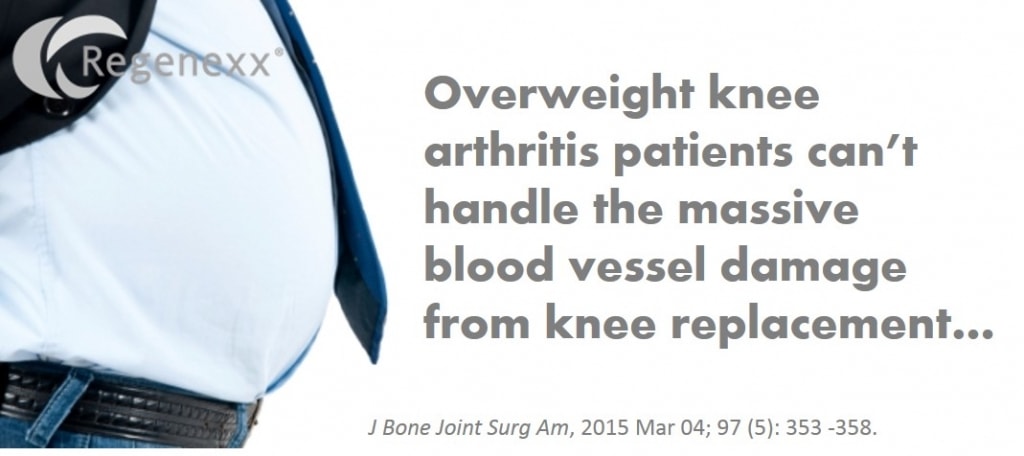Overweight Knee Replacement Patients and Complications
Overweight knee replacement patients have more of a nasty particle (endothelial microparticles) floating around their veins finds a new study in the Journal of Bone and Joint Surgery. In addition, they have fewer helpful blood vessel stem cells and more bad chemicals. All of these findings paint a picture consistent with other research that shows that heavier patients have more complications with knee replacement; these findings may just point to why.
Endothelial microparticles (EMPs) are tiny packets released by stressed out or dying blood vessel cells that can upset the normal body balance in creating new healthy blood vessels. Essentially, EMPs are an indicator of vascular health – the more of them we find, the worse the status of the vessels. They’re found in higher quantities in many diseases such as hypertension and type-2 diabetes.
The new research looked at 74 patients who underwent total knee replacement and measured blood samples before, directly after, and 3 days post surgery. Not only were EMPs measured, but the researchers also quantified the “good” endothelial progenitor cells (EPCs-blood vessel forming stem cells). At the 3 day mark, obese patients had more EMPs and less EPCs than their normal weight counterparts. In addition, obese patients had more nasty fat mediated chemicals (adipokines).
What does all of this mean? Knee replacement is an aggressive operation where the arthritic joint is amputated and then a prosthesis is forcefully inserted with mallets. Hence, it’s not surprising that there’s a storm of blood vessel injury byproducts like EMPs (bad) and EPCs (good). The interesting part is that obese patients don’t handle this severe trauma as well, producing more bad EMPs and fewer good EPCs. This fits with other studies showing that heavier patients have more complications after knee replacement.
The upshot? Being heavy can lead to more knee arthritis but knee replacement in heavier patients is more dangerous. Now one of the reasons why may have been discovered – the massive blood vessel damage caused by amputating the arthritic joint is not handled nearly as well by heavier patients.

NOTE: This blog post provides general information to help the reader better understand regenerative medicine, musculoskeletal health, and related subjects. All content provided in this blog, website, or any linked materials, including text, graphics, images, patient profiles, outcomes, and information, are not intended and should not be considered or used as a substitute for medical advice, diagnosis, or treatment. Please always consult with a professional and certified healthcare provider to discuss if a treatment is right for you.

